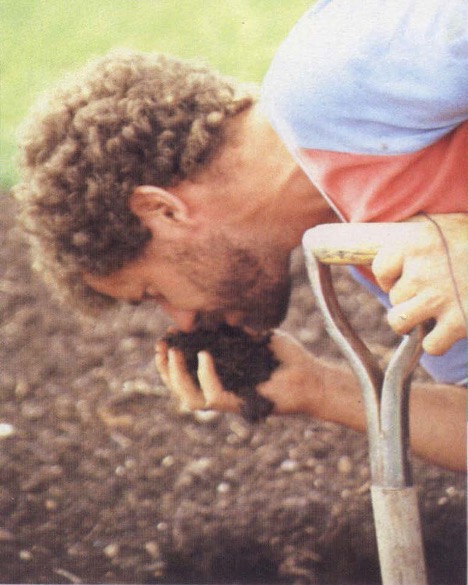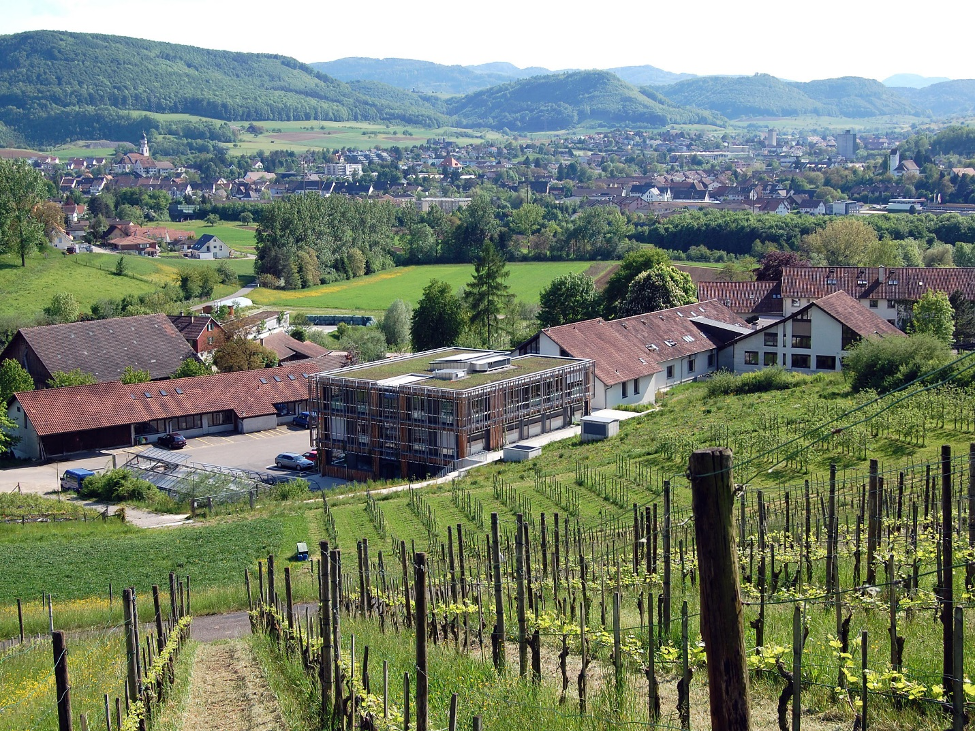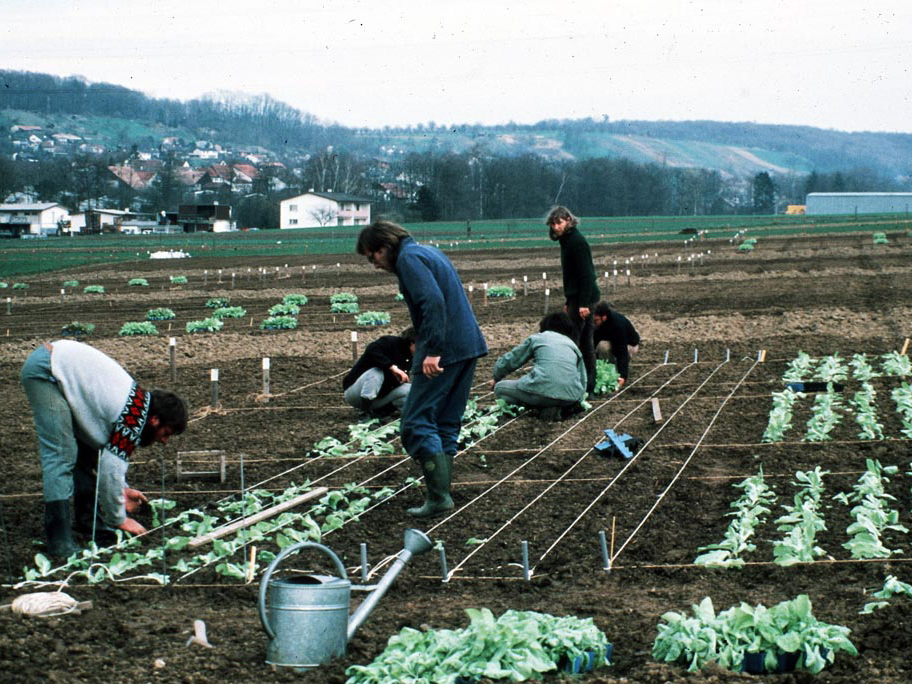By Will Brinton
One hears the phrase “soil health” so often these days it seems to be reaching a crescendo. Recently, the U.S. Department of Agriculture (USDA) formed an entire Natural Resources Conservation Services (NRCS) division for it. Around the same time, the Soil Health Institute (SHI) was formed, including sponsorship by USDA, agribusiness and the Nature Conservancy. My thesis is that the organic farming community set the idea of soil health in motion – but it’s a convoluted trail to demonstrate this.
In 2017, SHI released a report concerning adoption of “soil health practices” in the U.S., titled “Progress Report: Adoption of Soil Health Systems.” Organic farming did not even make the list. I found this curious and contacted the principal author, a land-grant university agronomist with ties to the Sustainable Agriculture Research and Education program (SARE). His response, in a nutshell, was that organic farming is too insignificant to count. Organically farmed land in the U.S. stands at 6 million acres, certainly a small fraction of the 900 million acres of total farmland. But what are organic farmers being measured against?
The SHI report is based on data from the 2017 U.S. Census of Agriculture and states that, in regard to soil health practices, the census collects information on cover cropping and tillage – including no-till, conservation tillage and conventional tillage. While it is not explicitly defined in the report, the 2017 Census of Agriculture Highlights explains no-till as follows: “Crops are planted directly into the vegetative cover or crop residue of the previous crop.” This definition doesn’t, however, mention the high-strength inorganic prill (pelleted) fertilizers and herbicides common to conventional no-till agriculture.
With an emphasis on no-till acreage (which accounts for 104 million acres in the U.S.) and cover crops (which accounted for roughly the same acreage as organic production in 2017), the report implies that these practices are the gold standard for soil health. Excluding organic, therefore, seems unfair.
Another puzzlement regarding soil health’s origin story comes from NRCS itself, which states that the roots of soil health lie in the 1973 oil embargo. It is well-known that the oil embargo brought conventional, energy-intensive farming to crisis, but what’s the connection to soil health? The effect was an enormous impetus for no-till farming – reducing fuel costs for land preparation.
It’s concerning in that attributing the origins of soil health to no-till and an oil embargo results both in over-estimating accomplishments while also undervaluing organic farming contributions. To dig deeper, we are going to have to unbundle many assumptions.
Defining Soil Health
Harry S. Truman once stated, “There is nothing new in the world except the history you do not know.” This is what I intend to explore.
Let’s start with how soil healthis defined. John Doran, a well-known Nebraska USDA-Agricultural Research Service (USDA-ARS) agronomist, described soil health in 1994 as “the capacity of a living soil to function, within natural or managed ecosystem boundaries, to sustain plant and animal productivity, maintain or enhance water and air quality, and promote plant and animal health.” Actually, Doran did not compose this definition for soil health, but for “soil quality.” It’s an important technical distinction. Between 1994 and 1996, Doran edited two books on soil quality by the Soil Science Society. Soil health was on people’s tongues, but sort of parenthetically. A 1995 article in Soil and Water Conservation suggested that, from a farmer’s perspective, soil health is a set of sensory traits – like the scent of soil.

In a 1995 article, farmers’ view on soil health was related to subjective features, such as a pleasing aroma. Reproduced with permission of the Soil and Water Conservation Society
Soil quality virtually became a new discipline by 1997. In an editorial in Soil Science of America Journal, the author cautioned, “A great deal of study and education will be necessary before soil quality becomes an important national natural resource issue.” What happened next is all too common in science: the subject became dissected to discover “underlying mechanisms.”
Supporting this conclusion is a 2008 paper in a well-ranked journal, Geoderma, arguing that soil quality became “inapplicable” due to poor standardization, spatial scale problems and poor definition of biological soil functions. The essay opined: “quality, being infinite; therefore, soil quality is undefinable.”
And then, crucially, around this time “quality” got switched to “health.”
While scientists, with their good intentions, exposed the hazards of quantifying soil quality – surely an oxymoronic undertaking – somehow the term soil health survived and multiplied. The phrase is certainly more powerful, being holistic and open to intuitive interpretations. Yet it is more than this. Darwin once summarized how his own ideas could overthrow many Victorian-era beliefs as follows: “As soon you realize it, the whole structure wobbles and collapses.” Analogously, this could explain USDA placing such heavy emphasis on soil health at a time when our nation’s soils and agriculturally impacted waterways are increasingly recognized to be at risk – a result of a century of beliefs in intensive, chemically-augmented, yield-focused agriculture.
The Watershed Moment for Soil Health
Writer Philip Guedalla said that the curious thing about history is that it happened. Examining earlier events, some of which I lived through personally, it is not difficult to uncover the watershed moment of soil health in biological, organic and biodynamic initiatives that did occur. The problem today may be persons and organizations having ignored these earlier events, imagining they do not exist.
In the summer of 1991, the Rodale Institute sponsored an influential symposium on soil quality in Emmaus, Pennsylvania. The next spring, Rodale president John Haberern wrote a guest editorial in Soil and Water Conservation where he proposed a soil health index as “a report card that documents the gains and losses in soil quality.” This, though, is not evidence enough.
In the prior decade, “alternative farming” had forced itself into the American scientific lexicon. With it came a new scientific publication: Journal for Alternative Agriculture (Doran served as editor along with Molly Anderson of Maine’s College of the Atlantic). Speakers at the early Emmaus event did suggest a link between soil quality and soil health – tentatively at first. Authors on this list include persons well-known from Washington State University (WSU), a hotbed of alternative farming science in the ‘80s. And if you read these early papers, many citations segue to Europe where we find the real watershed.
As one of the few Americans (along with Willie Lockeretz) in attendance at the first International Federation of Organic Agriculture Movements (IFOAM) conference in 1978 in Sissach, Switzerland, I witnessed the founding of the Research Institute for Organic Farming (called FiBL, its German acronym), now the world’s largest organic farming research center. That year, Otto Buess, a microbiologist at the Sissach-Ebenrain Agricultural College, which hosted the IFOAM event, published his remarkable essay, “Soil and Plant Health in View of Alternative Farming.”

The Research Institute for Organic Farming (FiBL) was founded in 1973 in Switzerland with a focus on soil health and plant quality. Today it is the largest research institution dedicated to organic farming. Photo from fibl.org
FiBL grasped at the very beginning that the future of organic agriculture depended on science demonstrating soil and plant health. They setup the now famous long-term D-O-C (bioDynamic-Organic-Conventional) field trials comparing different agricultural practices. FiBL lead scientist Paul Mäder considers the report on this trial, accepted by the journal Science in 2002, his most significant work.
Plant Health Depends on Soil Health
If this is not evidence enough, just across the border, the German Ministry of Agriculture released an 84-page comparison of biological and conventional farms in the spring of 1977. The battery of selected analytical traits used to compare the farms’ physical, chemical and biological conditions is uncannily similar to the “soil health indicators” we hear so much about today in the U.S. A University of Giessen graduate at the biodynamic research center told me at the time that agreeing on the range of tests as well as the farm selection was a grueling process for a large committee of stakeholders. To get a sense of the tension, the agricultural official who wrote the preface of the report said, “We are confronted with either stubborn denial of, or unreasoned belief in, biological farming – hence this study.” I recall offering to translate the hefty report, which drew dissension. It could embarrass the Ministry, which reluctantly agreed to the study, or the farmers who trustfully opened their books. Now I grasp what Norman Cousins meant by saying, “History is a vast early warning system.”
It reminds me of Maine, circa 1977, as MOFGA was negotiating recognition of organic approaches. University of Maine Professor Frank Eggert announced field plots to scientifically test organic methods. The news circulated like hot energy. Chaitanya York, MOFGA’s executive director at the time, suggested that “everyone show up” at the field day. But word got out that crashing the event might embarrass Eggert andourselves. Eggert and his student went on to publish their favorable results for the 1981 special session on organic farming as part of the American Agronomy Society annual meetings. In presenting the paper, Eggert cited earlier European field plot studies in which the soil health to plant health connections were scientifically investigated.
Incidentally, the German findings published in the 1977 report were that the soils on the biological dairy farms had significantly more soil life including more roots, earthworms, enzymes, respiration and legume nodules (but not more organic matter) than their conventional counterparts. With one-quarter the nutrient inputs, yields lagged by about 17% (see Table 1). Presently, it is increasingly recognized that the 10-20% yield penalty in organics may be worth the soil health benefits the methodology delivers.
Plant health is synonymous with soil health. At FiBL, an early published report revealed that organically grown greens do not accumulate excessive nitrate as do conventionally fertilized crops. Today we know this trait is mediated by the phytobiome: plants, their environment and their associated communities of organisms. This ecosystem function is absent when the soil is damaged or when it’s removed altogether. In 1977 such findings had large implications for Europe, which by the 1960s was already struggling with “leaky nitrate” due to heavy reliance on chemical fertilizers leading to reports on dangers of excessive nitrate in vegetable greens.

Early research at FiBL in Switzerland established that leafy greens treated organically were likely to have significantly less tissue nitrate at equal or greater yields than conventionally grown greens. Photo from fibl.org
A Reverence for Soil
Since this time, things have come full course – scarily. A series of current National Academy of Sciences seminars on “the nitrogen problem” have disclosed large tracks of America under a nitrate threat – essentially the entire Midwest. It is now officially affecting the health of people, particularly poorer, rural communities; in 10 states nearly 2 million people are being exposed to high nitrates in water due to chemical fertilizer and unhealthy soils.
History happens singularly, but interpretations are many. Clearly, NRCS and SHI believe no-till is synonymous with soil health – most agree less tillage is good – yet this connection is not universal. Around the same time that the report on soil health practices appeared, I sat in on a presentation on groundwater pollution in Ohio. The ARS researcher explained that it is causally linked to no-till. His published data show that harmful algal blooms in Lake Erie coincide with the very rapid rise of no-till farming. The problem appears in regions of the country with heavy soils that are drainage-tiled – in the U.S. we now have 65 million tile-drained farm acres. The complex causal-pathway includes over-reliance on herbicides (leaving soils bare), surface washing of fertilizer (which is often broadcast in no-till) and cracking of clayey soils, which permit chemicals to easily reach drainage tiles since the soil is not being cultivated. Environmental Working Group (EWG), a sponsor of the National Academy of Sciences sessions, estimates the algae problem has already cost Ohio $815 million.
One way forward, which I believe would put organic back up on the soil health radar, would be to redo the SHI survey of adoption of soil health practices – this time accounting for the forms of no-till which are damaging, in a manner similar to which organic growers are being scrutinized for their tillage. The SHI report presents that no-till preserves and improves conventional, chemical farming. To correctly attribute gains in soil health to conventional no-till practices, one should count the portion of those no-tillers – about 10% – who are experimenting with cover crops while also reducing chemical inputs.
Another scenario, which according to the recent National Academies of Sciences nitrogen symposium is currently being seriously discussed, is a farm nitrate cap-and-trade system, essentially a Payment for Ecosystem Service (PES) approach. Based on the early FiBL nitrate studies and published evidence in the Journal of Alternative Agriculture in 1998, which showed tenfold differences in drainage-tile nitrate between conventional and organic farms under similar cropping patterns, organic farming would trade very well.
A recent paper from Canada, published in Soil Biology and Biochemistry, cautions that “the usefulness of the soil health metaphor depends, not on whether or not we can finally entrap it numerically, but whether it propels us to greater reverence for soil, deeper insight into its beneficial processes, and wiser ways of managing it.” The organic farming community, which first brought the theme of soil health to light, has been fulfilling this deeper mandate for 50 years and there’s no reason this should stop.
References for this article are available at mofga.org/soil-health-references.
About the author: Will Brinton founded Woods End Laboratories, a soil testing lab situated in Mt. Vernon, Maine, in 1974, and serves on the Advisory Council for the Organic Materials Review Institute (OMRI) and is science advisor on the Real Organic Project Standards Board.
